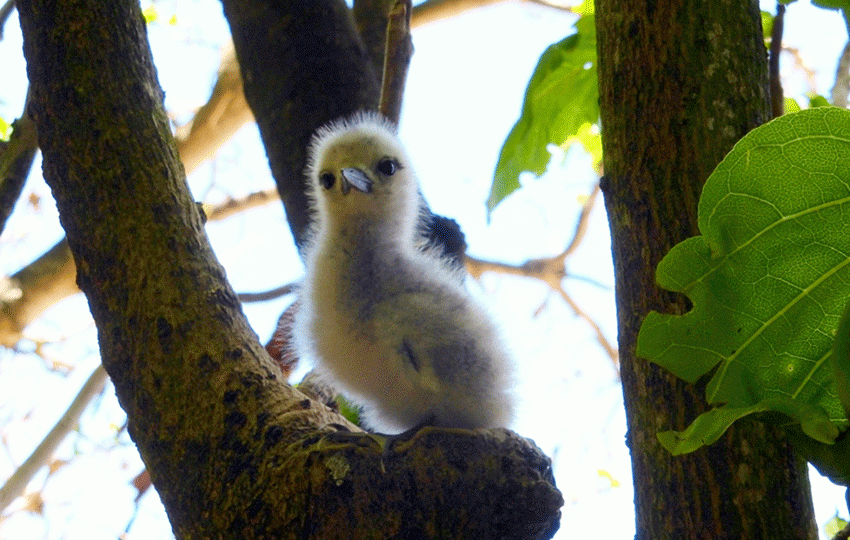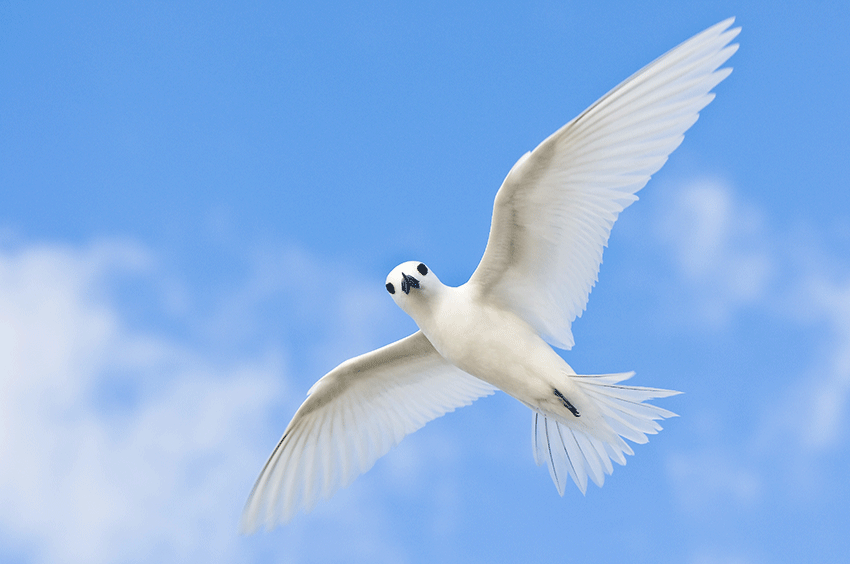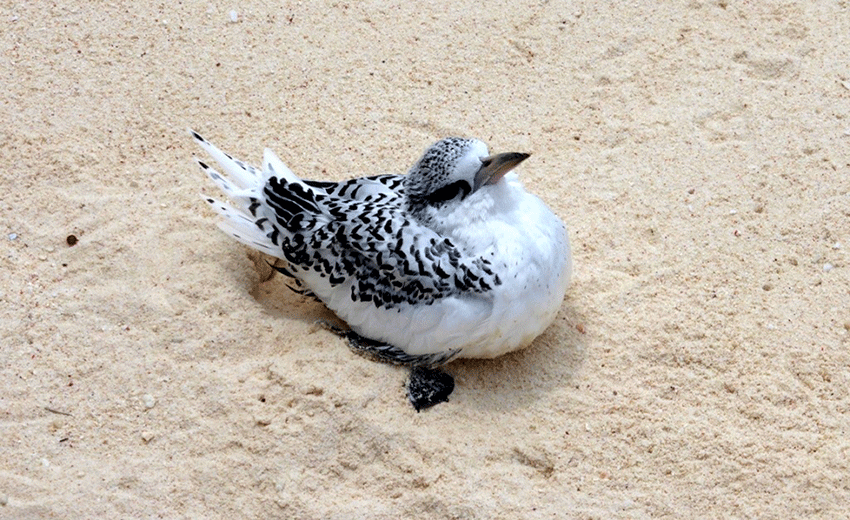
One of the many exciting volunteer tasks on Cousin Island Special Reserve is monitoring the resident breeding seabirds. During the past two months we have been monitoring the elegant white tern (Glygis alba), and the ferocious looking white-tailed tropic bird (Phaethon lepturus).
Cousin Island has a large number of breeding seabirds, being free of rats and cats that plague other islands in the Seychelles. We searched out 100 nests of each species and commenced a weekly monitoring program – recording whether the nest has an egg or a chick, or sometimes sadly nest failure. Even in the case of a failed nest, we continue to monitor the nest site, in case the same pair or another pair attempts to lay a new egg.

While the monitoring work is good fun and incredibly rewarding, it is not without its challenges. In the case of the tropic birds, observing the nest usually means being eaten alive by mosquitoes in the forest and tentatively lifting the adult bird to record presence of an egg without getting pecked. The white terns can nest rather high in trees, we have to use a pole with a mirror attached to observe the nests, this is a tricky manoeuvre and actually being clear on what is happening can be difficult.
Both the white tern and the white-tailed tropic bird breed year round, neither bird construct any kind of nest structure. The white tern simply incubates its egg on a tree branch, the chick has relatively large hooked feet to help it cling on to the branch whilst its parents are away, amazingly able to hold tight even on the windiest of days. White-tailed tropic birds usually nest on the ground, either in a tree hollow beneath some roots, in a rock crevice or in some of the old coconut stumps around the island.

The adults of both birds incubate their eggs for approximately 40 days. White-tailed tropic bird chicks remain at the nest for a further 70 to 90 days. The white tern chicks remain at the nest site longer, averaging 134 days and in some cases in excess of 200 days. Nesting success is limited in both species, sadly only 20-40% survives into adulthood.
Despite the unfortunate reality that many of the nests will fail, it’s very rewarding to watch the young seabird chicks grow on a weekly basis, from tiny little balls of down to feathered fledglings preparing for their first flight out to sea. Some of the young birds are ringed before fledging, so maybe one day we will see them return to Cousin and rear chicks of their own.
Steve Read

